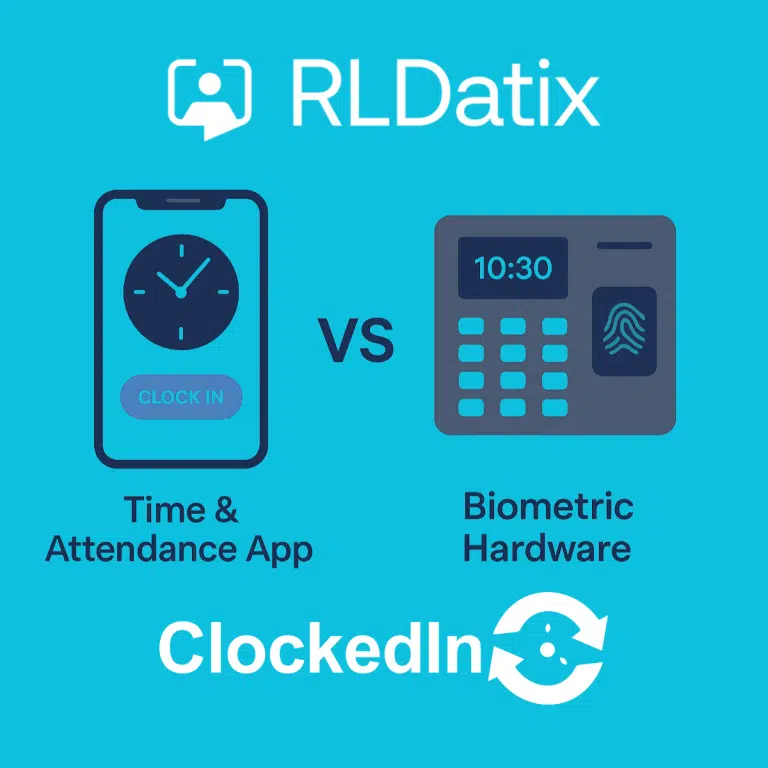In today’s fast-paced workplaces, managing time and attendance has become more than just clocking in and out — it’s about accuracy, compliance, and security. With a growing range of options available, many organisations face the same question: Should we use a time and attendance app, or invest in biometric hardware?
Both solutions have their advantages and drawbacks, and the right choice depends on your environment, workforce, and compliance needs. Let’s explore the pros and cons of each.
📱 Time and Attendance Apps
Mobile and tablet-based time tracking apps have grown in popularity, especially in hybrid and remote work environments. They allow employees to record their working hours from anywhere, using smartphones or web-based platforms.
✅ Pros:
-
Flexibility and Mobility: Perfect for remote, mobile, or field-based teams who aren’t tied to a single location.
-
Easy to Deploy: Quick setup with no additional hardware required.
-
Integration-Friendly: Connects easily to HR, payroll, and workforce management systems.
-
Cost-Effective: No physical devices or installation costs.
⚠️ Cons:
-
Risk of Inaccurate Data: Employees can clock in from home or off-site unless GPS or geofencing is enforced.
-
Potential for ‘Buddy Clocking’: Someone else can log in for a colleague if identity verification is weak.
-
Device Dependency: Requires personal or company smartphones; battery issues or app updates can cause disruptions.
-
Security Limitations: App-based authentication relies on passwords or PINs, which are easier to share or compromise.
✋ Biometric Hardware Devices
Biometric terminals — such as palm vein scanners, fingerprint readers, or facial recognition devices — capture unique physiological traits to verify identity. These are widely used in hospitals, manufacturing, logistics, and other high-compliance sectors.
✅ Pros:
-
High Accuracy: Eliminates false clock-ins and ensures each attendance record belongs to the correct individual.
-
No Passwords or Cards Needed: Users simply verify with their biometric data — no lost badges or forgotten PINs.
-
Enhanced Security: Biometric identifiers (like palm vein patterns) are nearly impossible to forge or duplicate.
-
Compliance and Traceability: Ideal for regulated industries requiring auditable, tamper-proof attendance records.
-
Offline Capability: Many terminals can cache data locally and sync automatically once reconnected.
⚠️ Cons:
-
Higher Upfront Cost: Requires hardware installation and maintenance.
-
Fixed Location: Designed for on-site use — less suitable for remote or mobile staff.
-
Environmental Factors: Extreme lighting, moisture, or dirt may affect fingerprint or facial recognition accuracy.
-
Training and Onboarding: Staff need to enrol their biometric data before use.
⚖️ Finding the Right Balance
For many organisations, the best approach is a hybrid one.
Apps are great for mobile workforces, while biometric hardware provides unbeatable reliability in controlled or high-security environments.
For example, ClockedIn devices integrated with RLDatix Optima combine both worlds: biometric accuracy at on-site locations, supported by a cloud platform and companion mobile tools for flexibility.
Whether you choose an app, hardware, or both — the goal remains the same: accurate, secure, and compliant workforce management.
🔗 Learn more: clockedin.uk
🩶 RLDatix Optima – Time and Attendance, Simplified for Healthcare:
https://www.rldatix.com/en-uki/solution/timeclocks/

